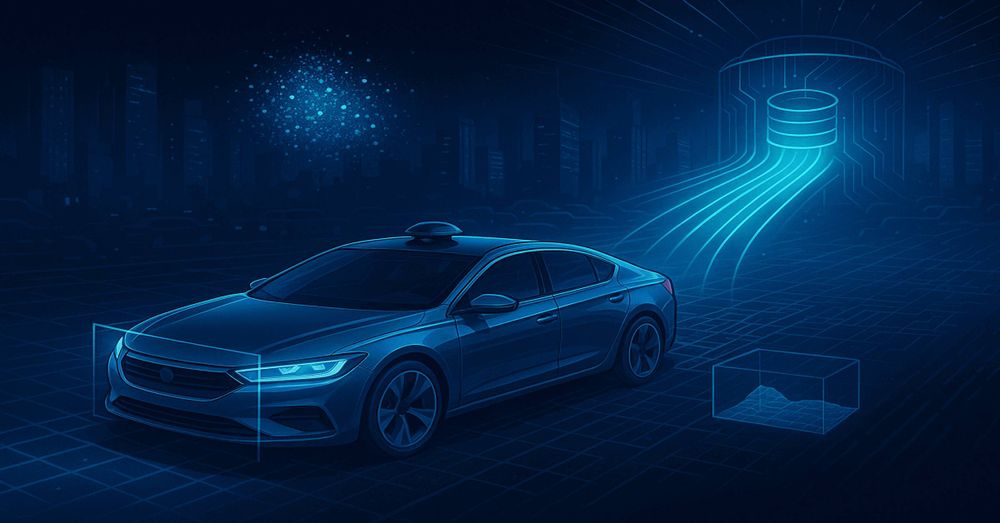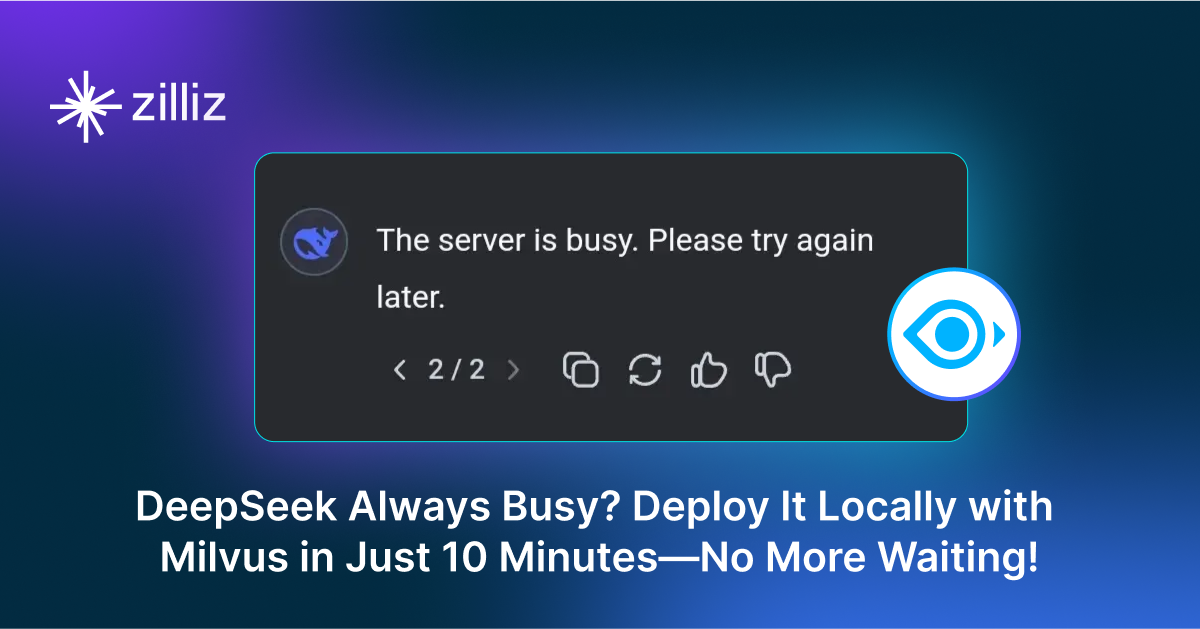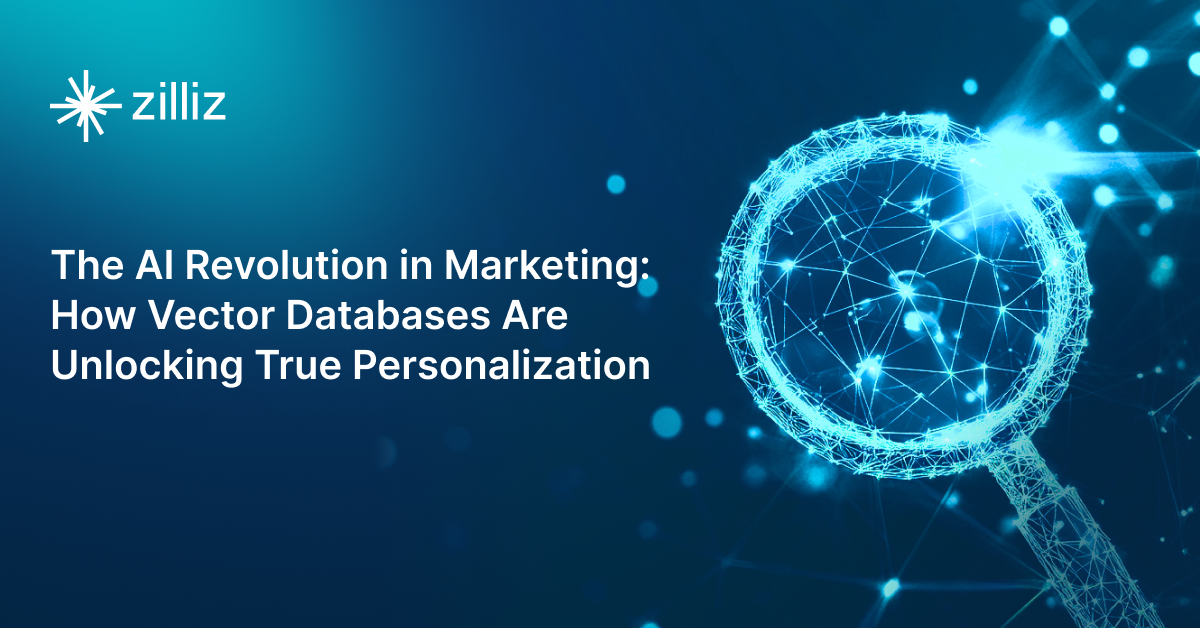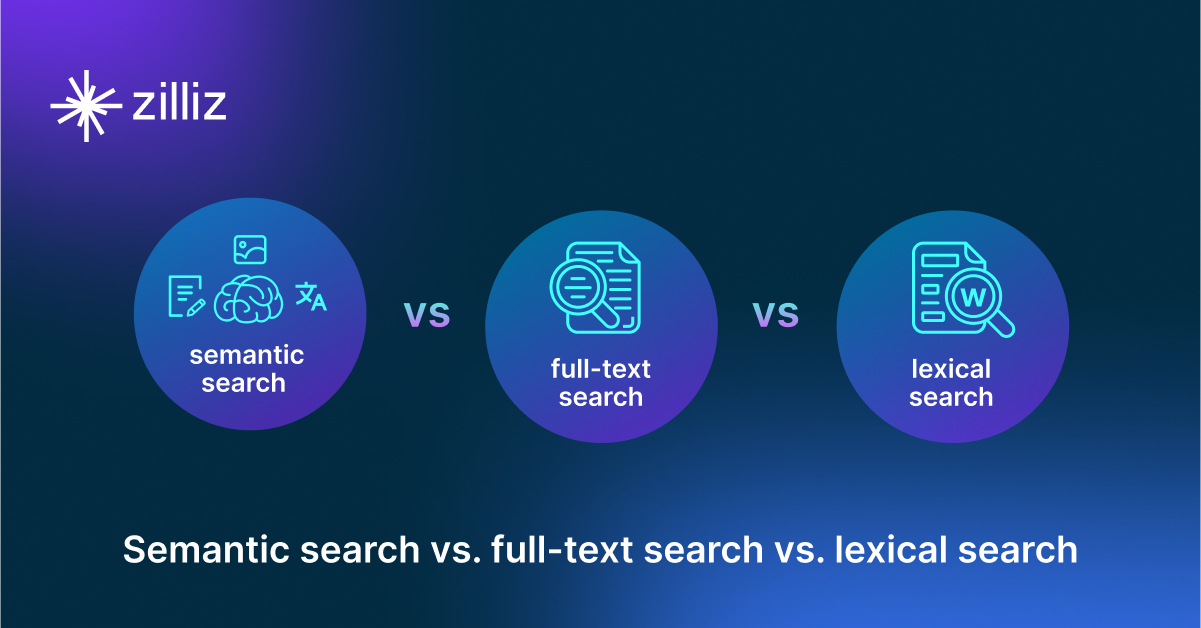The Real Bottlenecks in Autonomous Driving — And How AI Infrastructure Can Solve Them

After a decade of development and hundreds of billions in investment, autonomous driving has entered a new era. The industry is shifting from the prediction phase to the verification phase, marked by Tesla’s FSD v13.2.8 rollout and Waymo’s expanding fully autonomous ride-hailing services.
But as real-world deployment begins, a critical bottleneck is emerging: data infrastructure isn’t keeping up with algorithmic progress. While models grow more capable, the systems used to mine, process, and manage driving data remain stuck in the past — creating massive friction in scaling autonomy.
The way forward isn’t about collecting more data — it’s about extracting more meaning from the data we already have. This demands a shift from human-centric pipelines to AI-native data infrastructure, built on vector databases optimized for semantic understanding rather than rigid structured data.
In this blog, we’ll explore why traditional data processing is breaking down, how this crisis is slowing the path to full autonomy, and what a new generation of AI-powered tools — already being used by leaders like Bosch — means for the future of autonomous driving.
Top 3 Challenges in Autonomous Driving Data Mining
The Impossible Scale Problem
RAND estimates that autonomous vehicles need to drive 11 billion miles to prove they're just 20% safer than human drivers. That’s the equivalent of a million years of driving for one person. Even a dedicated fleet of 100 AVs running nonstop at 25 mph would take over five centuries to hit that target — longer than the entire 140-year history of the automobile.
And then there’s the data. IBM found a single test car generates 1TB of data per hour. Multiply that by a modest 100-vehicle fleet running 8 hours a day, and you're drowning in data — with over a million human annotators needed to process it using traditional methods.
So the real challenge isn’t just collecting more data — it’s finding the right data in the ocean we already have.
The Manual Labeling Crisis: Why Human Annotation Is Failing
Take Mobileye: managing 200PB of data, with 2,500+ annotators, 500,000 CPU cores, and processing 50 million datasets monthly — yet still struggling to keep up.
Why? Because long-tail edge cases — rare but critical — require frame-by-frame video analysis and deep spatiotemporal understanding. Video annotation is 3–5x costlier than static images, with each scene taking 2–5 minutes, and high error rates persist.
Worse, quality drops as scale rises. Autonomous data includes complex sensor fusion — camera, LiDAR, radar, GPS — that must align perfectly. Manual labeling often misses the mark, leading to 20–30% rework rates and millions in corrections.
And human annotation hits a wall with semantic depth. A red truck at sunset turning left on yellow while an elderly woman walks her dog — understanding intent, context, and behavior in scenes like this is far beyond traditional labeling systems.
The Fundamental Paradigm Failure
This isn’t just a scaling problem — it’s a fundamental mismatch between the complexity of autonomous driving data and the outdated tools we’re using to handle it.
Traditional data mining was built for structured, predictable inputs. But AV systems operate in messy, real-world environments that demand spatiotemporal understanding, multi-modal sensor fusion, and contextual reasoning — far beyond what manual annotation or legacy pipelines can handle at scale.
What’s needed isn’t a better version of the old approach — it’s a complete rethink of how we extract meaning from massive, high-dimensional data.
Vector Databases: The New Paradigm for Corner Case Mining
The AI-Powered Transformation
The rise of multimodal large models and vector databases is redefining how autonomous driving data is mined. Instead of relying on humans to label every frame, AI models now extract semantic meaning directly from raw data — capturing not just objects, but relationships and context.
This shift began with models like CLIP and has accelerated with next-gen multimodal models like GPT-4o and Gemini, which no longer require extensive fine-tuning. These models can identify rare patterns and extract fine-grained semantics from raw video — insights that are often missed or misinterpreted by human annotators.
Then, these AI models transform video clips, image frames, and objects into labels, text descriptions, and high-dimensional embeddings that preserve semantic relationships. All these embeddings are then stored in a vector database like Milvus for sophisticated similarity searches that understand context, not just visual appearance.
The workflow has fundamentally changed:
Traditional Approach: Raw sensor data → Manual feature engineering → Rule-based processing → Limited semantic tags
AI-powered Approach: Raw sensor data → Multimodal AI processing → Rich semantic embeddings → Intelligent similarity search with vector databases
Why Traditional Databases Fall Short
Traditional databases rely on structured metadata and predefined labels. They can tell you, for example, how many red trucks appear in your dataset — but they can’t understand context or intent.
Vector databases unlock a new class of search and analysis:
Text-to-image: “Find scenarios where pedestrians cross in low light”
Image-to-image: “Find near-miss incidents similar to this one”
Multi-modal: Combine visual, textual, and structured data in a single query
Modern enterprise solutions like Zilliz Cloud support multi-vector search, enabling simultaneous retrieval across descriptions, images, and metadata. This isn’t just an upgrade — it’s a whole new way to interact with your data.
Real-World Validation: The Bosch Story
The transformation from theoretical promise to practical implementation is already happening. Bosch, one of the world's largest automotive suppliers, provides concrete validation of vector database effectiveness in autonomous driving applications.
Through their implementation of Milvus vector database technology, Bosch achieved remarkable results:
70-80% improvement in scenario extraction efficiency from existing databases
Near-instantaneous retrieval of relevant scenarios, eliminating lengthy manual search processes
$10 million annual reduction in data storage costs through intelligent compression and quantization
Dramatic reduction in the need for expensive new data collection by efficiently finding existing relevant scenarios
This represents exactly the kind of transformation the industry needs: better results at lower cost through intelligent infrastructure rather than brute-force scaling.
Beyond Bosch, other leading automotive manufacturers are reporting similar successes. A major German automaker reduced its annotation workload by 60% while improving the quality of its edge case identification. A leading electric vehicle manufacturer cut their data processing pipeline from weeks to days using vector database-powered analysis.
Making Vector Analytics Affordable for Real-World Deployment
Vector databases have already proven their technical value in autonomous driving. But as the industry pushes toward mass-market adoption, cost becomes just as critical as capability. Autonomous systems must now fit into vehicles priced for mainstream consumers — not just premium models. That means rethinking data infrastructure under tight economic constraints.
The Economic Pressure Points
Deploying autonomous features at scale comes with serious financial challenges:
Advanced compute hardware (e.g., NVIDIA chips) adds thousands per vehicle
High-resolution cameras and LiDAR increase hardware BOM costs
Continuous data storage, transmission, and processing lead to recurring cloud expenses
And all of this must fit within single-digit profit margins
One major EV manufacturer learned this the hard way. When assessing vector database solutions for managing 100PB of driving data, projected annual costs exceeded $30 million — making the project unsustainable.
The Smarter Approach: Tiered Data Strategies
Not all data is equal. Autonomous driving data naturally segments based on usage needs:
Hot Data: Recent drives, edge cases, and real-time scenarios that demand instant access and top performance
Warm Data: Training datasets and historical insights used for batch processing — where some latency is acceptable
Cold Data: Archived scenarios and compliance records that are rarely accessed, but still must be retained cost-effectively
Most AV workloads — like deduplication, pattern discovery, or model training — don’t require real-time performance. They can tolerate latency of minutes to hours in exchange for major cost savings.
Vector Data Lake: Cost-Efficient Intelligence at Scale
Zilliz addresses these economic realities through its Vector Data Lake architecture, which separates compute from storage — optimizing for both performance and cost.
Three key components make this possible:
Full-Stack Integration: Unifies online and offline data with consistent formats, so datasets stay organized across the entire lifecycle
Fusion Compute Architecture: Works seamlessly with tools like Spark, Ray, and Iceberg, combining modern vector analytics with traditional ETL workflows
Tiered Storage Management: Keeps hot data on high-performance media while offloading cold data to low-cost object storage
The result? You get a powerful, cost-efficient infrastructure for managing massive unstructured datasets, purpose-built for the unique demands of autonomous driving — without breaking the bank.
Why Zilliz for Autonomous Driving?
Vector databases have become a critical component of autonomous driving data infrastructure. Since Zilliz open-sourced Milvus in 2019, adoption has surged — especially during the generative AI boom of 2022–2023. But not all solutions are built equally.
Autonomous driving pushes vector databases to the limit. It’s not just about indexing and similarity search — it's about managing massive, multi-modal datasets with evolving schemas, high performance, and tight cost constraints.
That’s where Zilliz stands out. We go beyond basic functionality to offer enterprise-grade tools purpose-built for AV demands. Here’s how:
Adaptive Labeling and Evolving Schemas
As perception models evolve, so do data requirements. Zilliz makes it easy to update or expand labels on the fly — using dynamic JSON columns and JSON path indexing. You can even add columns at runtime, with no need for costly re-indexing or restructuring.
Seamless Model Updates with Batch Embedding Replacement
Updating your embedding models? No problem. Zilliz supports alias switching, so you can deploy new models without interrupting queries. Plus, you can run hybrid searches across multiple vector columns — ideal for comparing models or tracking improvements.
High-Volume Ingest with Bulk Import
Managing petabytes of AV data? Zilliz’s bulk import engine ensures high throughput with minimal delays. Whether you’re onboarding historical data or processing new drives, performance stays stable even at scale.
Optimized for Cost and Performance
Autonomous workloads can’t afford inefficiency. Zilliz’s RabitQ quantization compresses vectors with one-bit encoding, reducing storage by orders of magnitude while preserving high recall. Advanced indexing options — including Range Search, TopK, Iterator Search, and Re-rank — let you tailor performance to each use case.
Built for Real-World Integration
Zilliz’s Vector Data Lake architecture integrates with tools like Apache Iceberg and Apache Spark, enabling a unified workflow for scene analysis, offline mining, and long-term data management — all while keeping costs in check.
This isn’t theoretical. Leading OEMs and AV companies are already using Zilliz to cut costs, speed up development cycles, and unlock new insights from their data.
Conclusion
Autonomous driving has entered a new phase — one where data infrastructure matters as much as algorithms. The race has shifted from raw speed to mastering the “compute–data–cost” triangle, where large AI models, vector databases, and vector data lakes form the new foundational stack.
In this landscape, winning means finding the right data at the right time, for the lowest cost. The companies that build the most efficient feedback loops — surfacing edge cases faster and learning from them more effectively — will lead the next wave of autonomous innovation.
This isn’t just a technical evolution. It’s a strategic necessity. Data processing efficiency directly affects development speed, safety, market readiness, and business viability.
Solutions like Milvus, Zilliz Cloud, and the Vector Data Lake architecture make this shift possible — delivering the deep semantic understanding AV systems require, while reducing infrastructure costs at scale.
In the long race toward full autonomy, the winners won’t be those who sprint the fastest, but those who see furthest, adapt fastest, and mine their data deepest. Vector databases and vector data lakes are the tools that make this depth of understanding both possible — and affordable.
Ready to Transform Your Autonomous Driving Data Infrastructure?
Discover how vector databases and vector data lakes can revolutionize your approach to autonomous driving data management. Our technical team can help you evaluate the potential impact on your specific use cases and provide a customized implementation roadmap.
- Top 3 Challenges in Autonomous Driving Data Mining
- Vector Databases: The New Paradigm for Corner Case Mining
- Making Vector Analytics Affordable for Real-World Deployment
- Why Zilliz for Autonomous Driving?
- Conclusion
- Ready to Transform Your Autonomous Driving Data Infrastructure?
Content
Start Free, Scale Easily
Try the fully-managed vector database built for your GenAI applications.
Try Zilliz Cloud for FreeKeep Reading

DeepSeek Always Busy? Deploy It Locally with Milvus in Just 10 Minutes—No More Waiting!
Learn how to set up DeepSeek-R1 on your local machine using Ollama, AnythingLLM, and Milvus in just 10 minutes. Bypass busy servers and enhance AI responses with custom data.

The AI Revolution in Marketing: How Vector Databases Are Unlocking True Personalization
Explore how vector databases and AI are transforming marketing platforms, enabling real-time personalization and predictive analytics while balancing automation with creativity.

Semantic Search vs. Lexical Search vs. Full-text Search
Lexical search offers exact term matching; full-text search allows for fuzzy matching; semantic search understands context and intent.